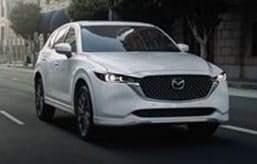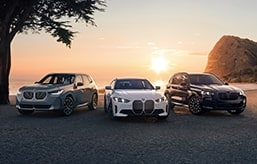- The 2025 Hyundai Tucson gets a mild refresh.
- Physical knobs are added for some climate control functions — hooray!
- Wireless Apple CarPlay and Android Auto are now standard.
2025 Hyundai Tucson First Drive: Interior Renovation
Physical buttons and wireless smartphone connectivity headline the Tucson's refresh
Hyundai finally listened to reason: In the refreshed 2025 Tucson, you can change the temperature with a knob. But that's not the only headline update for Hyundai's compact crossover. The interior is more spacious thanks to a redesigned center console, and wireless Apple CarPlay and Android Auto are now standard on every Tucson.
The gas-powered Tucson starts at $29,750 and the hybrid starts at $34,510 (all prices include $1,395 destination charge). Getting the plug-in hybrid is pricier ($40,775) and only comes with all-wheel drive.
Bigger screens and wireless phone integration
As far as refreshes go, this one is pretty light. But Hyundai managed to address most of the Tucson's significant pain points. Previously, getting anything but the base SE trim meant you had to plug in your smartphone with a cord, like some kind of caveman. That is no longer the case, as the Tucson now has a pair of 12.3-inch screens that create a panoramic effect and include wireless smartphone connectivity.
The redesigned center console features a wireless charging pad atop the lid. That beats where you typically find charging pads, buried underneath the center screen. It's small quality-of-life adjustments like these that make the refreshed Tucson a better place to be both a driver and a passenger.
Unfortunately, touch-type buttons remain. If you want to turn on your heated or ventilated seat (if so equipped, of course), change the fan speed or make other climate adjustments, you'll need to use the same frustrating flush-mounted switchgear found on existing Tucsons.
There are some minor exterior styling updates, including the design of the headlights. A pair of new exterior colors are added, too. But unless you put a 2024 Tucson and 2025 Tucson side by side, you're unlikely to notice many dramatic differences.
Go with the hybrid
The Tucson's hybrid powertrain gets a very small horsepower boost (up to 231 hp from 226 hp), though you're unlikely to notice the difference. The hardware is the same, but Hyundai says it's now extracting a little more power from the existing battery. The other powertrains remain the same. The gas-powered Tucson is good for 187 hp and the PHEV tops the list at 268 hp.
I drove the hybrid Tucson and its extra 5 hp has not magically made the SUV more fun to drive. If spirited driving isn't a priority, you'll have little to complain about. If you're looking for a compact SUV with a little more spice, the Mazda CX-50 — with its better steering and generally more composed chassis — will deliver the required heat.
Fuel economy is the Tucson's biggest obstacle if knocking the Honda CR-V off its perch is Hyundai's goal. The gas-powered Tucson's EPA-estimated 28 mpg in combined driving can't quite match the CR-V's 30 mpg combined. Of course, a refresh wasn't going to solve this problem, and the Tucson hybrid still offers as much as 38 mpg combined with the added benefit of turbocharged power. Plus, the Tucson offers creature comforts on higher trims, like cooled seats, that you simply can't get on a CR-V.
It's easy to overlook the base Tucson's lack of power and poor fuel economy when you consider how few other nits there are to pick, and the hybrid powertrain remains the one I'd recommend for the best experience. Combined with a handful of tweaks to the Tucson's interior, a ton of standard driving aids, a comfortable ride and cavernous cargo area, Hyundai's stylish compact SUV continues to be a compelling choice.







 by
by  edited by
edited by